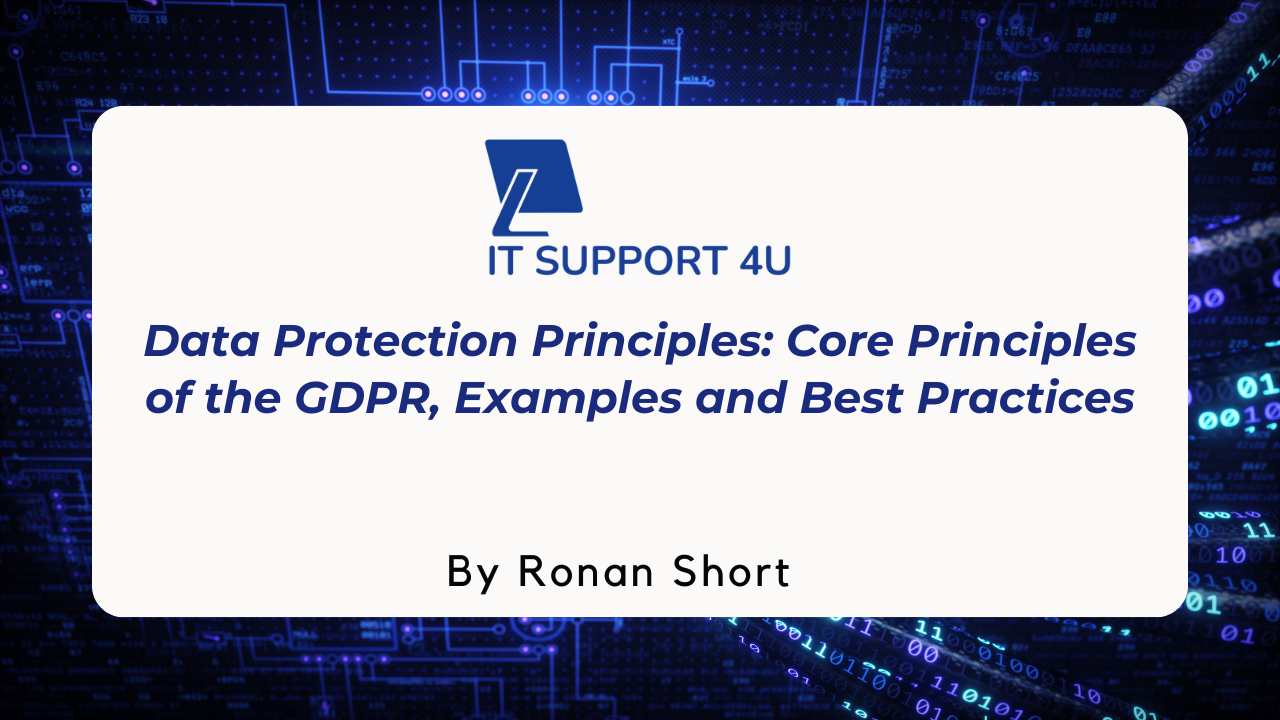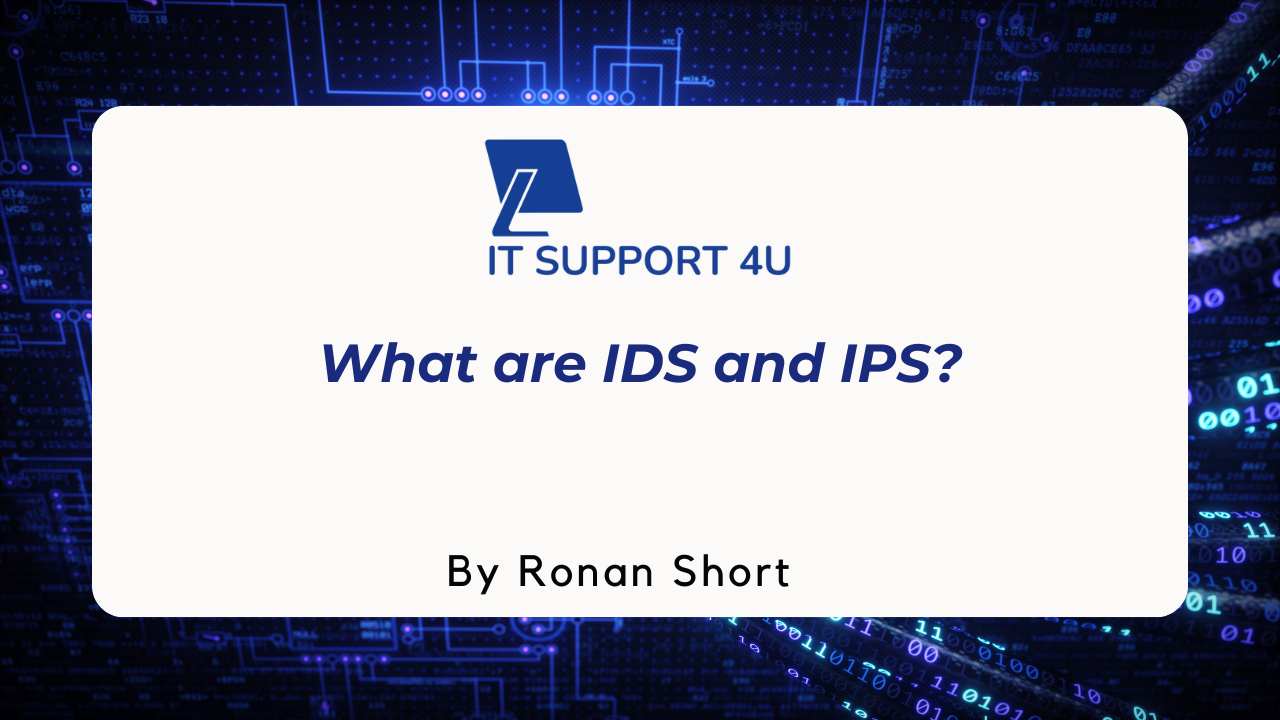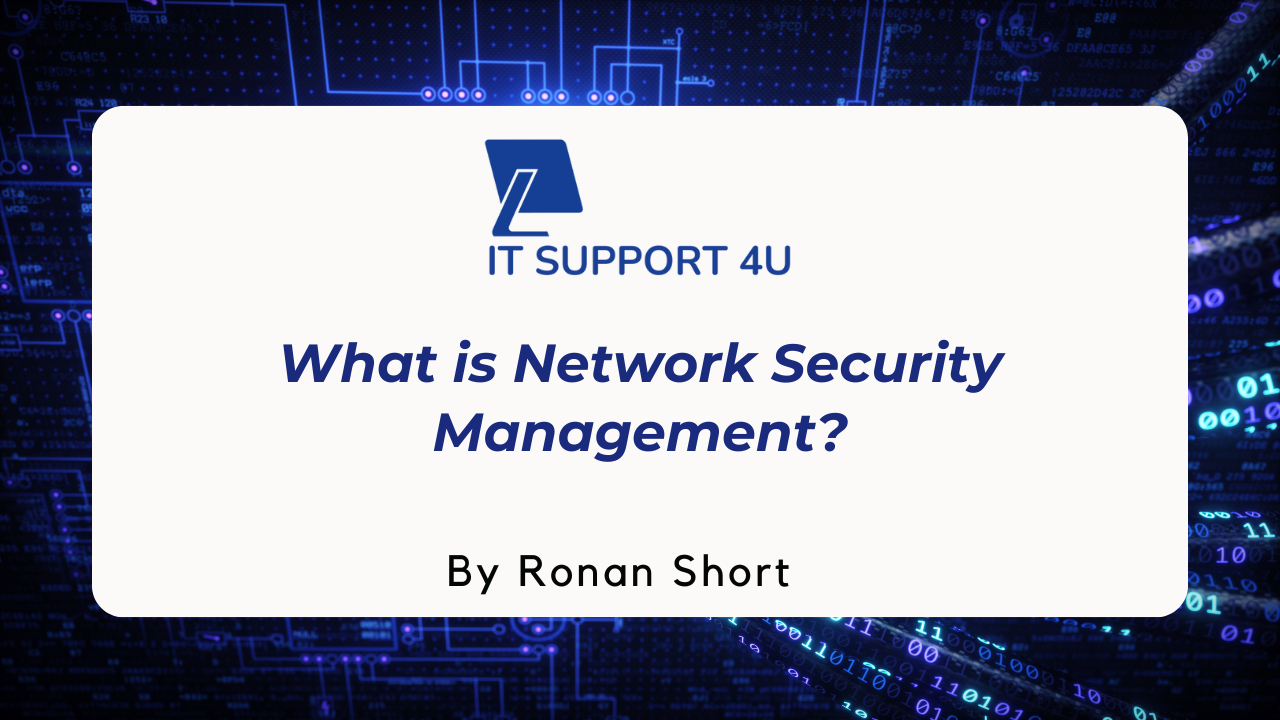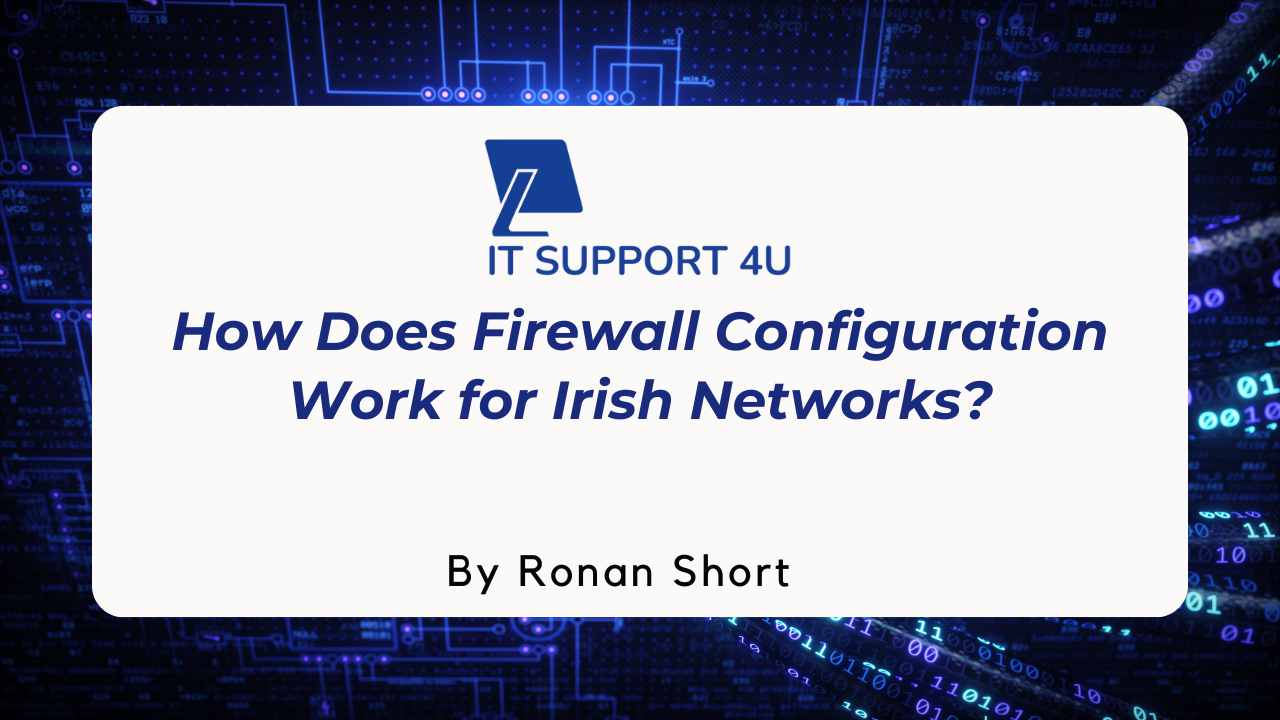Network security may seem like an overwhelming task for many Irish homeowners. As fellow homeowners, we too have grappled with securing our home networks and can therefore empathise with the difficulties you might be facing.
In this blog post, we're sharing practical steps backed by extensive research and relevant facts about safeguarding your network from cyber threats. So, read on to learn how to protect your home network from online dangers!
Key Takeaways
- Develop and enforce a strong password policy: Create complex passwords with numbers, symbols, and a mix of uppercase and lowercase letters. Implement two-factor authentication for added security.
- Implement encryption for data protection: Convert sensitive data into an unreadable format that can only be accessed with the correct decryption key.
- Set up firewalls for network defence: Create a barrier between your internal network and the outside world, blocking unauthorised access and potential cyber attacks.
- Install antivirus and malware protection: Protect your devices from harmful viruses and malware by installing reliable software. Regularly update to stay ahead of emerging threats.
- Regularly update software and devices: Keep operating systems, applications, and firmware up to date with the latest security patches to protect against vulnerabilities.
Steps to Maintain Network Security
To maintain network security, we need to develop and enforce a strong password policy, implement encryption for data protection, set up firewalls for network defence, install antivirus and malware protection, and regularly update software and devices.
Develop and enforce a strong password policy
Creating a robust password policy is pivotal to our network security strategy. Long, complex passwords that include numbers, symbols, and both uppercase and lowercase letters are harder for cybercriminals to crack.
We must avoid using obvious choices such as 'password123' or personal information like family names or birthdays. A two-factor authentication process further strengthens our defence by confirming the user's identity through another method apart from just entering a password.
Equally crucial is enforcing this strong password policy across our entire network. Regular prompts encouraging users to update their passwords can help keep our system safe over time.
Let's not wait till we become victims of hacker attacks; let's start guarding against unauthorised access today with a stringent password policy.
Implement encryption for data protection
Implementing encryption is a crucial step in ensuring the security of your network. Encryption helps protect sensitive data by converting it into a format that can only be accessed with the correct decryption key.
By encrypting your data, you safeguard it from unauthorised access, including potential cyberattacks and data breaches. It provides an extra layer of defence, making it extremely difficult for hackers to retrieve valuable information even if they manage to breach other security measures.
With end-to-end encryption in place, you can have peace of mind knowing that your client's personal and financial data is well protected.
Set up firewalls for network defence
Firewalls are an essential tool for protecting your network from unauthorised access and potential cyberattacks. By setting up firewalls, you create a barrier between your internal network and the outside world, making it harder for hackers to gain access to sensitive information.
Firewalls examine incoming and outgoing network traffic, blocking any suspicious or potentially harmful connections. They can also be configured to restrict access based on specific rules and policies, ensuring that only authorised users can enter the network.
Setting up firewalls is an important step in maintaining the security of your home network and keeping your personal data safe from threats.
Install antivirus and malware protection
We must install antivirus and malware protection on our devices to maintain network security. This software helps protect against harmful viruses, worms, and other malicious threats that can compromise the safety of our data.
Regularly updating this software is key to staying ahead of emerging threats and ensuring maximum protection for our network. By installing reliable antivirus and malware protection, we can safeguard our devices from potential cyberattacks and keep our network secure from any unauthorised access or data breaches.
Regularly update software and devices
Regularly updating software and devices is key to maintaining network security. By keeping your operating systems, applications, and firmware up-to-date with the latest security patches, you can ensure that any vulnerabilities are addressed promptly.
This helps protect against cyber threats such as viruses, worms, and hacker attacks. Regular updates also help improve overall network performance and reliability by fixing bugs and enhancing functionalities.
Make it a habit to regularly check for available updates and install them as soon as possible to keep your network secure. Remember, staying updated is an essential part of our layered defence strategy against potential cybersecurity risks.
Importance of Network Monitoring
Network monitoring is essential for identifying and addressing security holes, detecting and responding to suspicious activity, and monitoring network traffic and data flow.
Identify and address security holes
We can identify and address security holes in our network to enhance its overall security. Here are some steps we can take:
- Conduct regular vulnerability assessments to identify potential weaknesses in our network.
- Keep track of software updates and patches to ensure that any known vulnerabilities are addressed promptly.
- Implement access controls and user roles to limit the privileges and access levels of different users within the network.
- Monitor network traffic and data flow to detect any suspicious or unusual activity that may indicate a security hole.
- Regularly review and update security policies to align with evolving cybersecurity threats and best practises.
- Train employees on how to recognise and report potential security holes, such as unusual system behaviour or unauthorised access attempts.
Detect and respond to suspicious activity
We need to be vigilant in detecting and responding to any suspicious activity on our network. Here are some key steps we can take:
- Utilise intrusion detection systems (IDS) and security monitoring tools to identify any anomalies or potential security breaches.
- Regularly review logs and event data for any signs of unauthorised access or unusual behaviour.
- Establish incident response procedures that outline how to address suspicious activity promptly and effectively.
- Train employees to recognise common signs of hacking attempts, such as phishing emails or unusual network traffic.
- Encourage employees to report any suspicious activity immediately to our IT department.
- Implement real-time threat intelligence feeds that provide up-to-date information on emerging threats.
- Conduct regular vulnerability assessments and penetration testing to proactively identify potential weaknesses in our network defences.
Monitor network traffic and data flow
Monitoring network traffic and data flow is a crucial aspect of maintaining network security. It allows you to actively keep an eye on the information that enters and exits your network, ensuring that it remains secure and protected. By monitoring network traffic, you can identify any suspicious activities or anomalies that could indicate a potential security breach. This enables you to respond promptly and take the necessary actions to mitigate any risks. Additionally, monitoring data flow helps you understand how data moves within your network, allowing you to identify bottlenecks and optimise network performance. Here are some key points regarding the importance of monitoring network traffic and data flow:
- Identify and address security holes: Monitoring helps identify any vulnerabilities in your network infrastructure, such as open ports or outdated protocols. By addressing these security holes promptly, you can prevent unauthorised access and potential attacks.
- Detecting and responding to suspicious activity: Regularly monitoring network traffic enables you to detect any unusual patterns or behaviours that may indicate malicious activity, such as the presence of malware or unauthorised attempts at accessing sensitive information. This allows you to take immediate action to investigate and mitigate the threat.
- Ensure reliable access: Monitoring helps ensure that your network resources are available when needed. By keeping an eye on traffic patterns, bandwidth usage, and congestion levels, you can proactively allocate resources where they are most needed to maintain optimal performance.
- Improve network performance: Analysing data flow patterns allows you to identify bottlenecks or areas of inefficiency within your network infrastructure. With this insight, you can make informed decisions about optimising your network configuration for better performance.
- Enhance overall cybersecurity: Effective monitoring helps strengthen your overall cybersecurity posture by providing valuable insights into the behaviour of your networks. It enables you to track user activity, enforce compliance with security policies, detect unauthorised devices or software installations, and ensure that data is being transmitted securely.
Employee Education and Training
Now, let's shed light from the educative perspective:
Educate employees on cybersecurity best practises
To maintain network security, it is important to educate employees on cybersecurity best practises. Here are some key practises to implement:
- Use strong and unique passwords for all accounts.
- Enable multi - factor authentication whenever possible.
- Regularly update software and devices to ensure they have the latest security patches.
- Be cautious of suspicious emails and avoid clicking on unfamiliar links or attachments.
- Train employees to recognize and report phishing attacks.
- Implement a policy of not sharing sensitive information through email or other unsecured channels.
- Make sure employees understand the importance of keeping personal devices secure, especially if they connect to the company network.
- Conduct regular training sessions to keep employees informed about new threats and best practices.
Train employees to recognise and report phishing attacks
We emphasise the importance of training our employees to recognize and report phishing attacks. It helps to increase their awareness and protects our network from potential security breaches. Here are some key steps we take:
- Conduct regular cybersecurity awareness training sessions.
- Teach employees how to identify common phishing techniques, such as suspicious emails or messages asking for sensitive information.
- Show examples of phishing attempts and provide real - life scenarios to help them understand the risks.
- Encourage employees to report any suspicious emails or messages immediately.
- Implement a reporting system that allows employees to easily report phishing attempts anonymously if they prefer.
- Provide clear guidelines on the actions employees should take if they suspect a phishing attack, such as not clicking on any links or opening attachments in suspicious emails.
Make cybersecurity part of onboarding process
We believe that making cybersecurity part of the onboarding process is crucial for maintaining a secure network. By educating and training employees right from the start, we can ensure that they understand and adhere to cybersecurity best practices.
This includes teaching them how to recognize and report phishing attacks, the importance of using strong passwords, and being cautious with suspicious emails. By instilling a culture of cybersecurity awareness from day one, we can create a strong first line of defence against potential threats.
Implement Additional Security Measures
In addition to the steps mentioned above, there are several additional security measures you can take to further enhance network protection. From using two-factor authentication for enhanced login security to implementing email security measures, these measures will help safeguard your network against potential threats.
Use two-factor authentication (2FA) for enhanced login security
We highly recommend using two-factor authentication (2FA) to strengthen the security of your login process. With 2FA, you not only need a password but also an additional verification method, such as a fingerprint or a unique code sent to your mobile device, to gain access to your accounts and systems.
This adds an extra layer of protection against unauthorised access, even if someone manages to obtain your password. By implementing 2FA, you can significantly reduce the risk of hackers gaining control over your accounts and ensure that only authorised individuals can log in.
It's a simple yet powerful measure that greatly enhances the security of your online presence.
Secure remote access through VPN
We ensure secure remote access through VPN, which stands for Virtual Private Network. This technology encrypts our internet connection, creating a secure tunnel that shields our data from prying eyes.
By using a VPN, we can securely access our network and resources from anywhere, whether we're working from home or on the go. With VPN in place, Irish homeowners can have peace of mind knowing that their sensitive information is protected even when accessing it remotely.
Implement data loss prevention (DLP) techniques
To maintain network security, it is important to implement data loss prevention (DLP) techniques. DLP helps to safeguard sensitive information by monitoring and controlling data as it moves within and outside the network.
By using DLP software, you can identify and protect confidential data such as personal information or financial records from being accessed or shared without authorization. This ensures that your valuable data remains secure and protected against potential breaches or leaks, providing peace of mind for Irish homeowners.
Employ intrusion prevention systems (IPS)
Employing intrusion prevention systems (IPS) is a crucial step in maintaining network security. An IPS is designed to identify and prevent potential threats to your network, such as hacker attacks and malware infections.
By continuously monitoring network traffic, an IPS can detect any suspicious activity and block it before it has the chance to cause harm. This layered defence approach adds an extra level of protection to your network infrastructure, strengthening your overall cybersecurity measures.
With an IPS in place, you can have peace of mind knowing that your data and network are being actively protected against potential cyber threats.
In addition, implementing an IPS can help you stay compliant with regulatory requirements by ensuring that your network meets industry standards for security. It also helps safeguard sensitive client data by preventing unauthorised access and enhancing data encryption protocols.
By incorporating intrusion prevention systems into your overall network security management plan, you are taking proactive measures to protect both yourself and your clients from potential cyberattacks.
Implement email security measures
We need to implement email security measures to protect our network from cyber threats. By doing so, we can safeguard sensitive information and prevent unauthorised access to our emails.
One way to enhance email security is by using encryption techniques. Encrypting our emails ensures that they are only readable by the intended recipients, making it difficult for hackers to intercept and decipher the content.
Additionally, regularly updating antivirus software on all devices helps detect and block any malicious attachments or links that may be present in incoming emails. By implementing these measures, we can effectively mitigate risks and maintain a secure network environment.
Consider cloud network security solutions
Cloud network security solutions can provide an extra layer of protection for your network and sensitive data. With cloud-based security measures in place, you can benefit from advanced threat detection and prevention capabilities that continuously monitor your network for suspicious activity.
Cloud solutions also offer the advantage of scalability, allowing you to easily grow or adjust your security needs as your business expands or changes. Additionally, by utilising cloud-based security services, you can offload the burden of managing and updating your own on-premises security infrastructure.
This ensures that your network is consistently protected against evolving cyber threats without requiring additional resources or expertise from your end.
Conclusion
In conclusion, maintaining network security is crucial in protecting your valuable data and information. By implementing strong password policies, using encryption for data protection, setting up firewalls, regularly updating software and devices, and educating employees on cybersecurity best practices, you can create a layered defence against hackers and other threats.
Additionally, monitoring network traffic and implementing additional security measures such as two-factor authentication and email security measures can further enhance the overall security of your network.
With these proactive steps in place, you can ensure the reliability and safety of your network infrastructure. So, if you need help with any of these measures or want to learn more about how IT Support 4U can help protect your network in Ireland, don’t hesitate to contact us today!
Get an IT Plan Today!













